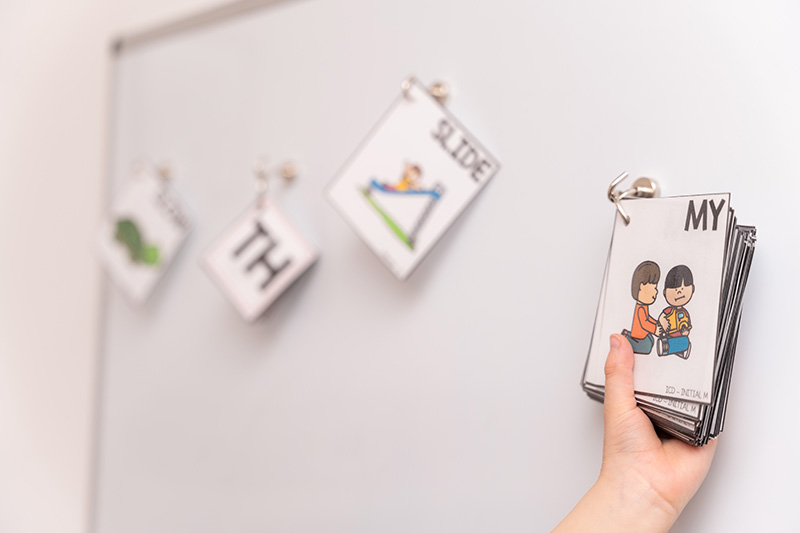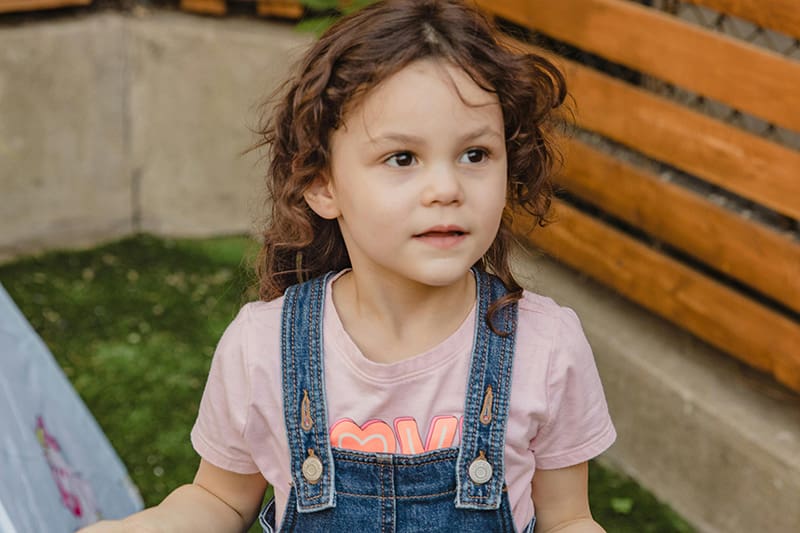
Childhood Apraxia of Speech (CAS)
Understanding Apraxia
Common Signs of Apraxia
- Difficulty imitating sounds and words.
- Inconsistent speech errors.
- Challenge producing longer words or phrases.
- Groping movements of the mouth when trying to speak.
- Limited babbling during infancy.

Who May Benefit from Speech Therapy for Apraxia?
- Children who have difficulty forming more complex speech sounds or longer utterances.
- Children who have challenges producing volitional speech (versus automatic speech, such as saying the ABCs).
- Children with limited babbling, though not all children with limited babbling will have apraxia.

How Speech Therapy Can Help
Our experienced speech-language pathologists provide comprehensive evaluations to accurately diagnose apraxia and determine the best course of treatment. Based on the evaluation, we create an individualized treatment plan that focuses on:
- Improving motor planning and coordination for speech.
- Enhancing overall speech intelligibility.
- Building effective communication strategies.

What to Expect from Our Therapy Sessions
- Assessment: We begin with a thorough assessment to understand your child’s specific apraxia-related needs.
- Personalized Plan: A customized therapy plan is developed to address your child’s unique goals.
- Intensive Practice: Our therapy sessions include repetitive and intensive practice of speech sounds, syllables, and words.
- Progress Monitoring: We continuously monitor your child’s progress and adjust the therapy plan as needed to ensure meaningful improvements.

Our Approach to Apraxia Therapy
- Evidence-Based Techniques: Our therapists use proven techniques and methodologies to help children with apraxia develop accurate speech production.
- Family Involvement: We involve parents and caregivers in the therapy process to provide support and reinforcement at home.
- Positive and Encouraging Environment: We create a supportive atmosphere where children feel confident and motivated to practice their speech skills.

Therapeutic Techniques We Use
- Dynamic Temporal and Tactile Cueing (DTTC): A method that involves providing visual, auditory, and tactile cues to help children produce sounds and words.
- Integral Stimulation: A technique that focuses on "watching me and listening to me" to practice speech movements.
- Motor Learning Principles: Applying principles of motor learning to help children develop and refine their speech motor skills through practice and feedback.


"We had the most wonderful experience with Chicago Speech Therapy! Our speech pathologist, Miss Megan, developed a bond with our son almost immediately. By week two, he would await her arrival by the window in our front door! She quickly discovered all of his favorite things and would bring so many toys of her own that would keep him engaged and wanting to talk! She gave us (parents) tons of strategies to work with on our own in between her weekly visits. Our son made consistent progress under her care and has now been released from speech therapy ~ which actually makes us so sad ~ simply because we miss Miss Megan! She basically became part of our family and will be dearly missed. I couldn’t recommend Miss Megan and Chicago Speech Therapy more!"
"The process w/ CST was smooth, from the intake process, registration, processing insurance to on-going communication. Sarah was the Speech Therapist for our 9-year-old and she established a wonderful rapport with her and gained her trust over the months. I highly recommend CST."




